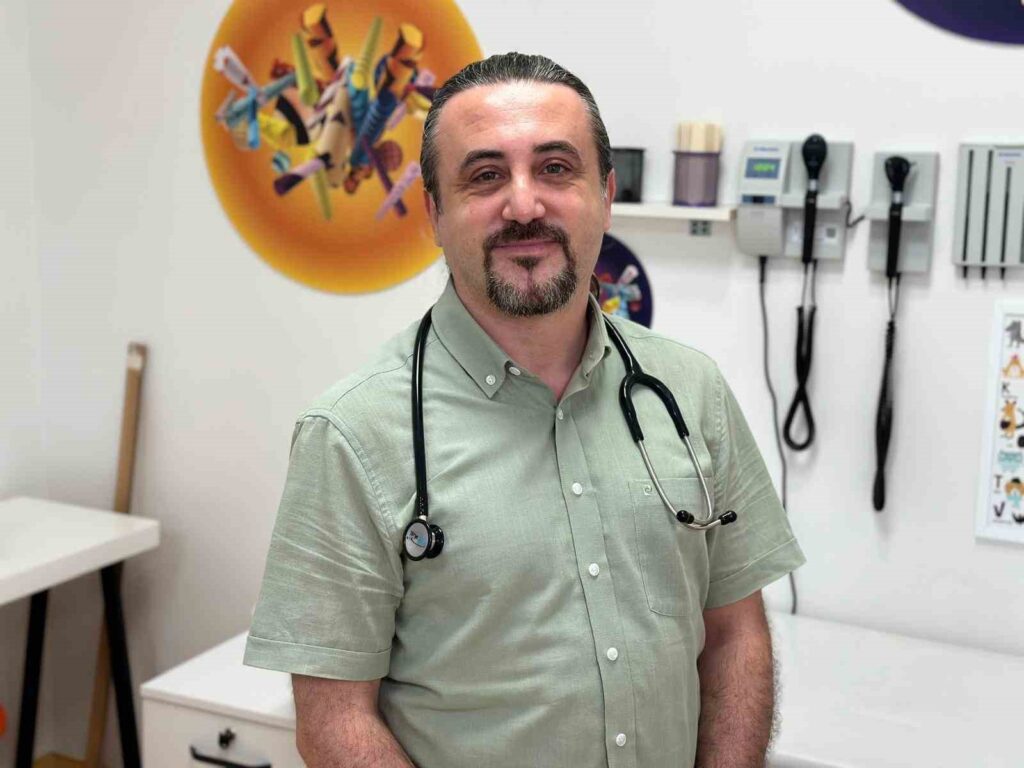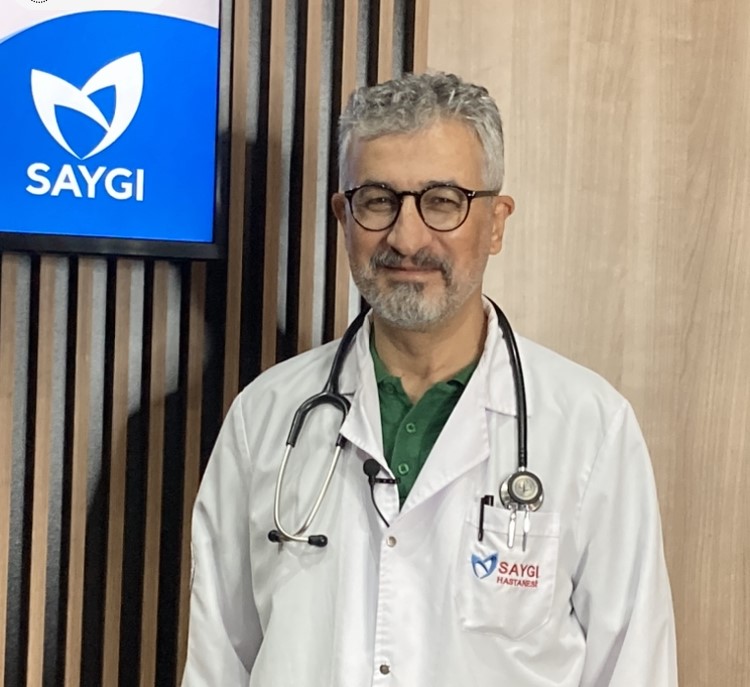It grew without showing any signs, and by the time it was reached, it had reached a diameter of 30 centimeters.
In Izmir, 52-year-old Meral Coşkun, a mother of two, was on the brink of losing her life due to ovarian cancer, which had not only gone undiagnosed for many years but also metastasized into a condition known as ‘Peritoneal Carcinomatosis’.

Meral Coşkun (52), a mother of two children from Izmir, was on the verge of losing her life due to ovarian cancer that had metastasized and caused peritoneal carcinomatosis, a type of cancer of the abdominal lining, despite not showing any symptoms for many years and not being diagnosed. While Coşkun was shocked to have a tumor measuring 30 centimeters in diameter and weighing 9.5 kilograms removed from her abdomen, Prof. Dr. Cem Terzi, who performed the surgery, stated, “The mass had grown so large that it was pressing on the internal organs, which is why it was a life-threatening surgery. We removed the tumor, and a new treatment program will be determined from now on.”
Meral Coşkun, a housewife living in Kuşadası, Aydın, began to experience complaints of fatigue, gas, indigestion, and bloating last April. Not taking these complaints seriously, she sought medical attention only when the swelling in her abdomen grew larger at the end of July, where tests indicated a mass on her ovary. Coşkun’s children, Müzeyyen and Tahsin Coşkun, began searching for doctors and hospitals for their mother’s treatment. The tumor originating from the ovary and spreading to the abdominal cavity continued to grow and caused serious health issues for Meral Coşkun. She turned to Prof. Dr. Cem Terzi, a General Surgery Specialist at Acıbadem Kent Hospital, for the surgery which posed a life-threatening risk due to the mass pressing on all internal organs.
“At least six specialist doctors participated in the pre-operative preparation”
Prof. Dr. Cem Terzi stated that since the tumor originated from the ovary, they performed the surgery together with Prof. Dr. Coşan Terek, a specialist in Obstetrics and Gynecology. “A tumor of this size is not commonly seen. It originated from the ovary and spread to every part of the abdominal lining. We call this peritoneal carcinomatosis. When the patient came to us, her blood values were poor, and the tumor was pressing on the internal organs. Since the coagulation values in her blood were abnormal, she saw a hematologist who prepared her for surgery. There was pressure on her kidneys, and she couldn’t urinate, so she saw a nephrologist. Intensive care and anesthesia evaluations were done. There was pressure on her lungs, and a pulmonologist treated her. At least six specialist doctors were involved in the pre-operative preparation. Since it was a tumor originating from the ovary, we performed the surgery together with Prof. Dr. Coşan Terek. It was a tumor measuring 30×30 centimeters, 20 centimeters high, and weighing 9,520 grams; we removed it without any issues. Afterwards, we cleaned up the remaining small tumors and administered hot chemotherapy into the abdomen. Our medical oncology specialist determined the medication; we washed the abdominal cavity with hot chemotherapy at 41 degrees Celsius for 1.5 hours to ensure that no invisible cancer cells remained. After the surgery, the patient stayed in intensive care for one night and was hospitalized for a total of six days. There were no complications after the surgery,” he said.
“This tumor has a history of 3-5 years”
Prof. Dr. Terzi continued, “Now we will present the patient to the tumor council, and our roadmap for the future will be determined. This case shows us two things: first, that such an operation can be performed through multidisciplinary collaboration. It was a large, challenging case with a high risk of death. It was achieved through teamwork. The second point this case highlights is the importance of routine checks for early diagnosis of cancer and how crucial it is for women to observe changes in their bodies. Unfortunately, ovarian cancer is still diagnosed very late. We had to discuss with the patient and her family the risk of her dying during the surgery. This tumor has a history of 3-5 years. It may not show symptoms, but it could have been diagnosed when it was just 1-2 centimeters. It can be caught with annual routine checks, so treatment could be initiated before it grows so large, and the patient would not have to face such a high life-threatening risk during surgery. Women need to know which tumors are common in their bodies. They should conduct their own breast checks accordingly. They should not neglect their annual gynecological exams for uterine and ovarian cancer. Noticing changes in their bodies and, above all, not skipping routine checks are very important for early diagnosis,” he emphasized.
“Don’t postpone your annual checks”
Meral Coşkun, who is still in shock from having a 9.5-kilogram tumor removed from her abdomen, expressed her happiness at overcoming many problems she faced before the surgery, such as difficulty breathing while walking. “I didn’t take my complaints seriously; I underestimated them. I thought my abdomen was bloating due to indigestion. I didn’t know the symptoms of ovarian cancer. If I had known, I would have gone to the doctor earlier. I never thought it would come to this; I escaped death. We went through very difficult days, and my husband and children were devastated. Now I am experiencing the joy of being able to breathe and walk comfortably again. My family is also smiling. After the surgery, my oncology treatment will begin. Health is truly the most important thing. After experiencing this situation, I tell all women not to neglect their checks. I thank my doctors endlessly,” she said.







